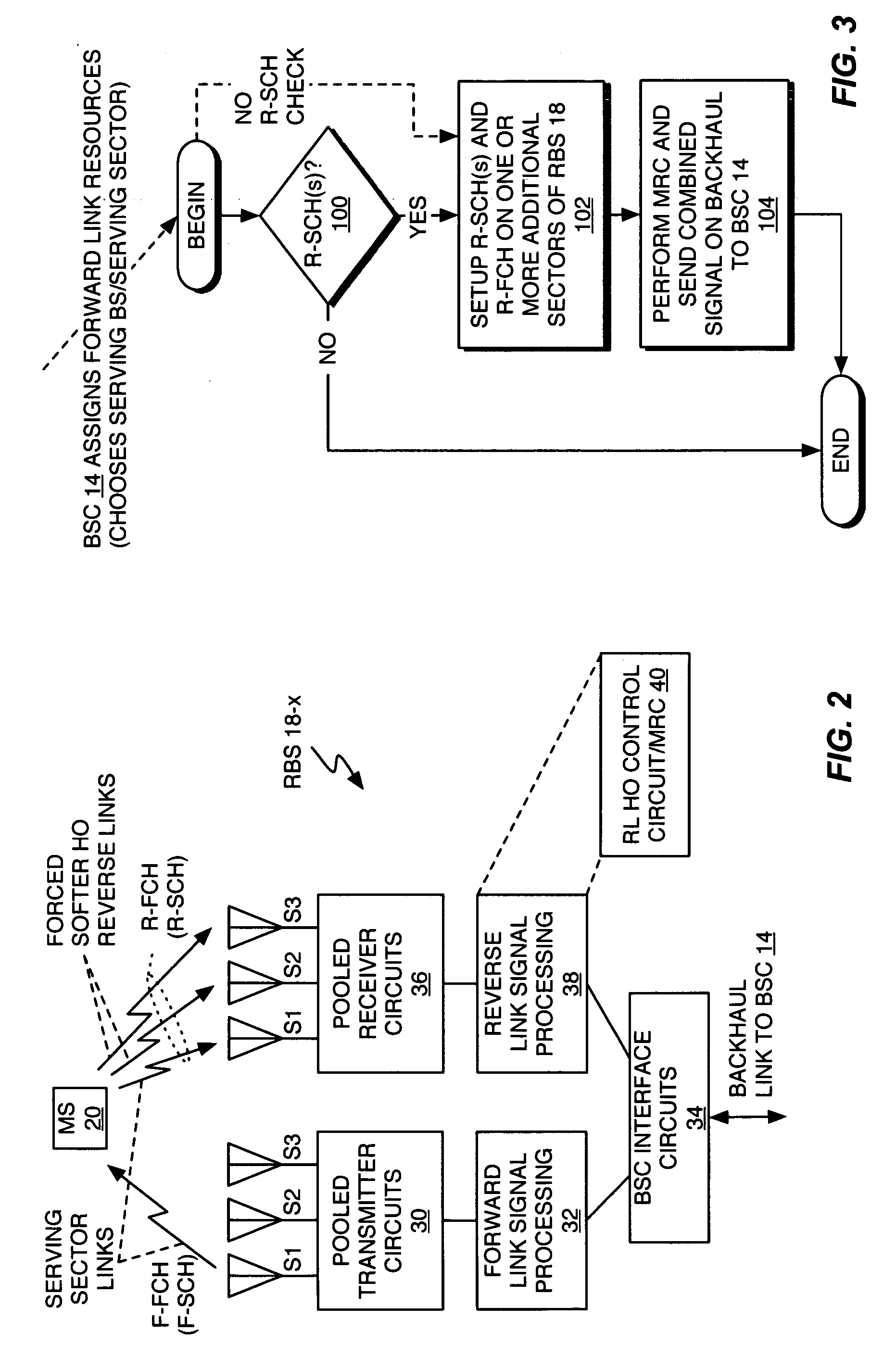Method and apparatus to improve CDMA reverse link performance
- Summary
- Abstract
- Description
- Claims
- Application Information
AI Technical Summary
Benefits of technology
Problems solved by technology
Method used
Image
Examples
Embodiment Construction
[0018]FIG. 1 illustrates an exemplary CDMA-based wireless communication network 10 configured according to the present invention. Network 10 comprises a Radio Access Network (RAN) 12 that includes a Base Station Controller (BSC) 14, including control and interface circuits 16, and a plurality of multi-sector Radio Base Stations (RBSs) 18-1, 18-2, and 18-3. It should be understood that in practice, RAN 12 can include a plurality of BSCs 14, each having a greater or lesser number of associated RBS 18.
[0019] Regardless, each RBS 18-x provides radio coverage over a plurality of sectors, wherein “x” is a generic reference to any one of the depicted RBSs 18-1, 18-2, and 18-3. Thus, RBSs 18 communicatively couple mobile stations 20 to BSC 14 by providing the air link interface that supports wireless signaling to and from the mobile stations 20. In turn, BSC 14 is linked to one or more Core Networks (CNs) 22 that provide communication links to one or more external networks 24, such as the ...
PUM
 Login to View More
Login to View More Abstract
Description
Claims
Application Information
 Login to View More
Login to View More - R&D
- Intellectual Property
- Life Sciences
- Materials
- Tech Scout
- Unparalleled Data Quality
- Higher Quality Content
- 60% Fewer Hallucinations
Browse by: Latest US Patents, China's latest patents, Technical Efficacy Thesaurus, Application Domain, Technology Topic, Popular Technical Reports.
© 2025 PatSnap. All rights reserved.Legal|Privacy policy|Modern Slavery Act Transparency Statement|Sitemap|About US| Contact US: help@patsnap.com



